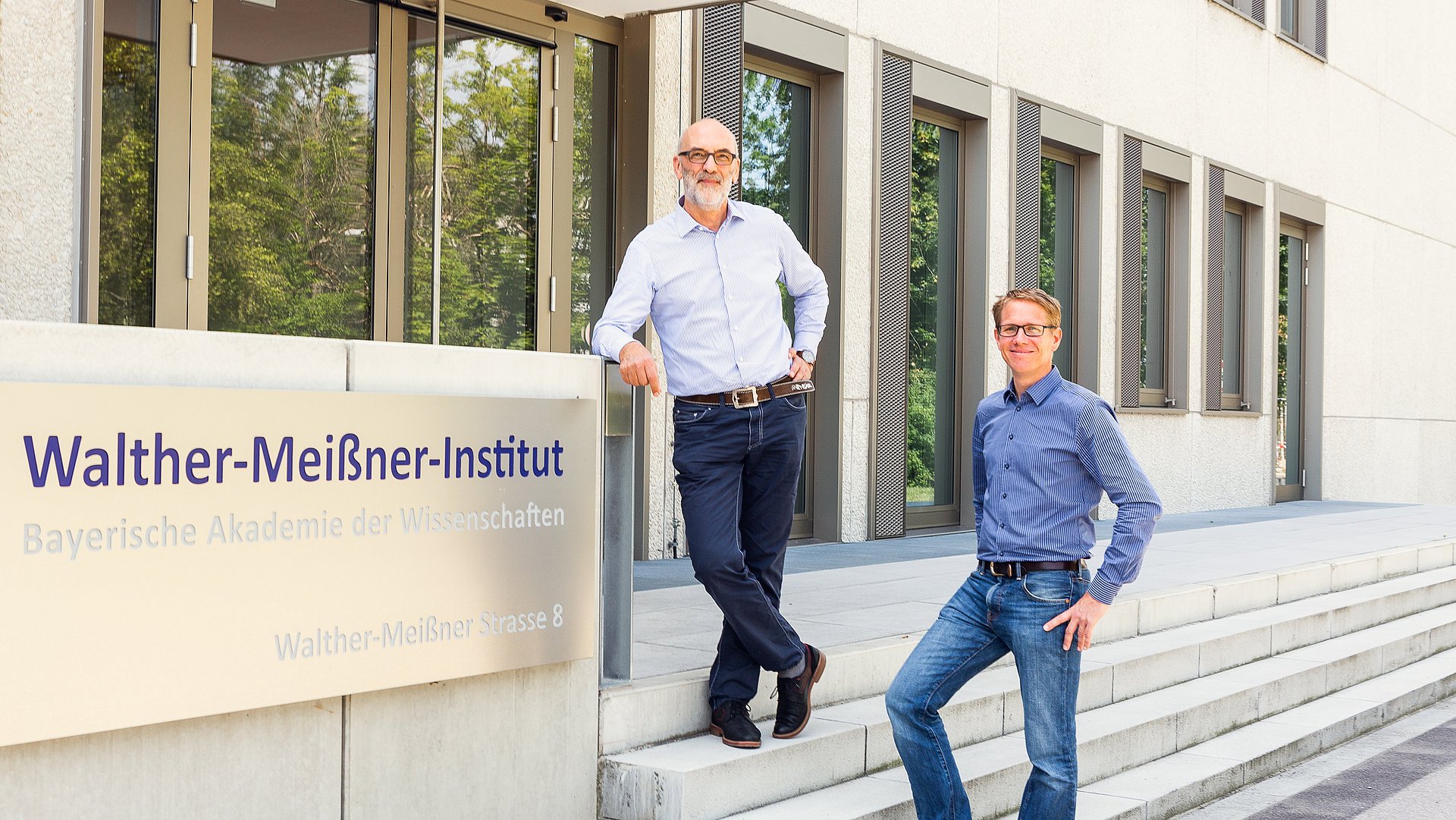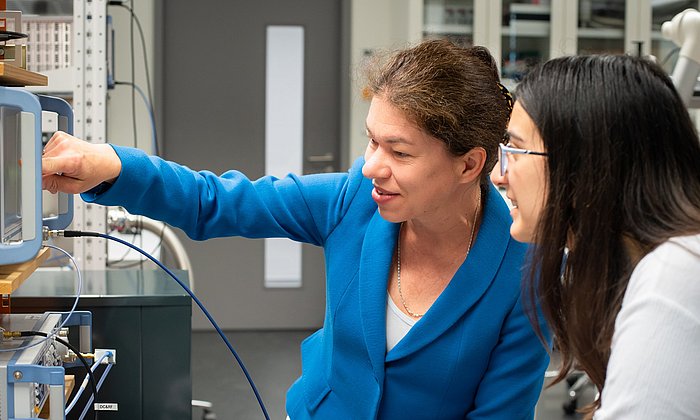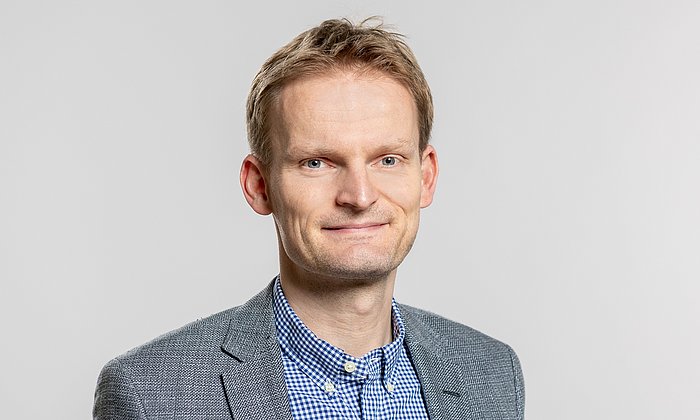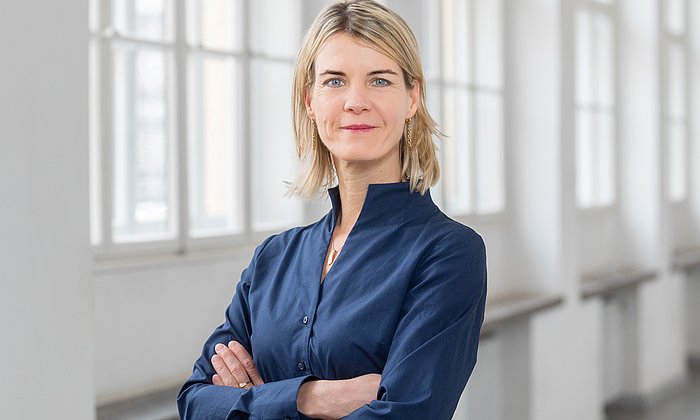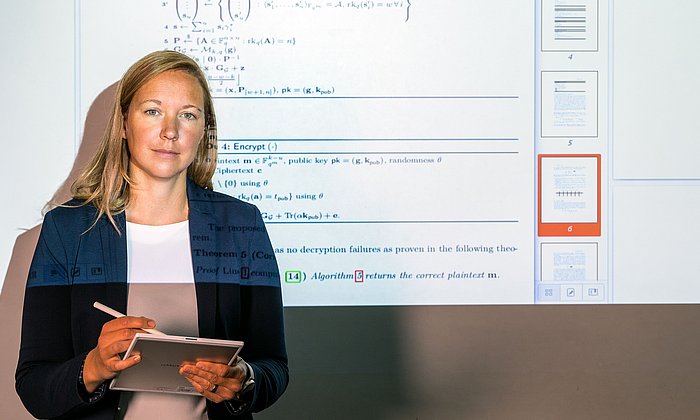Multidisciplinary research domain
Shaping the Dawn of the Quantum Age

"We cool the chip down to only a few thousandths of a degree above absolute zero – colder than in outer space," says Rudolf Gross, Professor of Technical Physics and Scientific Director of the Walther Meissner Institute (WMI) at the Garching research campus. He's standing in front of a delicate-looking device with gold-colored disks connected by cables: The cooling system for a special chip which utilizes the bizarre laws of quantum physics. For about twenty years now, researchers at WMI have been working on quantum computers, a technology based on a scientific revolution that occurred 100 years ago when quantum physics introduced a new way of looking at physics. Today it serves as the foundation for a "new era of technology," as Prof. Gross calls it.
To shape this emerging era, researchers in Garching are investigating ways to utilize the rules of quantum physics, as well as the associated risks and the potential benefits of quantum technology to society.
Manipulating individual atoms
"We encounter quantum physics every day," says Gross. For example, when we see a stovetop burner element glowing red. In 1900 Max Planck found the formula for the radiation which bodies of different temperatures emit. This meant that he had to assume that the emitted light consists of tiny energy parcels, referred to as quanta. Quantum physics continued to develop in the years that followed, fundamentally changing our understanding of the microcosmos. New technologies exploited the special properties of atoms and electrons, for example the laser, the magnetic resonance tomograph and the computer chip.
The technologies of this first quantum revolution control large quantities of particles. In the meantime, physicists can also manipulate individual atoms and photons and can produce objects which obey the laws of quantum physics. "Today we can create tailor-made quantum systems," says Gross. The principles of quantum physics, for which there as yet hardly any technological realizations, can be used in this so-called second quantum revolution.
The first of these principles is superposition: A quantum object can assume parallel states, which are mutually exclusive in the classic frame of reference. For example an electron can rotate both to the right and to the left at the same time. The superposed states can also mutually interact, similar to intersecting waves which either reinforce one another or cancel out one another – this is the second principle: quantum interference.
Grasping inconceivable phenomena
The third phenomenon is entanglement. Two particles can have a joint quantum state, even if they are located kilometers away from one another. For example, if we measure the polarization of a given photon, then the measurement result for the entangled partner is instantaneously ascertained as if the space between the two photons did not exist.
As exotic as these concepts may sound, they're equally important for technical progress. Classical computers have a drawback: They process information sequentially, one step at a time. "Not even supercomputers which are constantly growing faster will be able to master all the tasks at hand," says Gross, since the complexity of some tasks can increase drastically. For example, the number of possible travel routes between several cities increases with each potential stop. There are six possible routes between four cities, while for fifteen cities the number is more than 40 billion. Thus, the task of finding the shortest route very quickly becomes overwhelmingly complex, even unsolvable, using classical computers within a viable amount of time.
The principle of superposition makes the task much easier for the quantum computer: It uses quantum bits, or qubits, which can process the bit values 0 and 1 simultaneously instead of sequentially. A large number of qubits, linked with one another by quantum interference or entanglement, can process an inconceivably large number of combinations in parallel and can thus solve highly complex tasks very quickly.
Qubits – tiny circuits
Back to WMI: Here we find silver vacuum chambers in which metal atoms are precisely deposited on hand-sized silicon wafers. The highly pure metal layers forming on these wafers form the basis for tiny circuits. When supercooling makes the circuits superconductive, the electricity they carry oscillates at various frequencies corresponding to different energy levels. The two lowest levels serve as the qubit values 0 and 1. The chip in one of these cooling systems contains six qubits, sufficient for research purposes.
However, quantum computers need several hundred qubits in order to solve practical problems. In addition, each one of the qubits should be able to perform as many computational steps as possible in order to realize algorithms which are relevant for practical purposes. But qubits lose their superposition very quickly, even after the slightest disturbance, such as material defects or electrosmog – "an enormous problem," says Gross.
Complex correction procedures must then be used to correct these errors, but these processes will require thousands of additional qubits. Experts expect that this will take many years to achieve. Nevertheless, initial applications could already be functional when the number of qubit errors is reduced, if not eliminated.
"One important error source is unwanted mutual interaction between qubits," says Dr. Kirill Fedorov of the WMI. His remedy: Distributing qubits across several chips and entangling them with one another. In the basement of the WMI Fedorov points to a tube with the diameter of a tree branch leading from one quantum computer to the next. The tubes contain microwave conductors which put the qubits into mutual interaction with one another. This approach could make it possible for thousands of qubits to work together in the future.
Hypersensitive quanta measure more precisely
Eva Weig, Professor of Nano and Quantum Sensor Technology, has a different perspective on this lack of perfection. "The fact that quantum states react so sensitively to everything can also be an advantage," she says. Even the most minute magnetic fields, pressure variations or temperature fluctuations can measurably change a quantum state. "This can make sensors more sensitive and more precise and make them capable of better spatial resolution," says Weig.
She wants to use relatively large objects as mechanical quantum sensors. Even nanostructures consisting of millions of atoms can be put into their quantum ground state, as researchers at the University of California first demonstrated in 2010. Eva Weig is building on the finding: "I want to construct easily controlled nanosystems in order to measure the smallest forces."
In the laboratory the physicist presents a chip her team made in its own cleanroom. On it are what she calls "nano-guitars", invisible to the naked eye: Tiny strings, 1,000 times thinner than a human hair, which vibrate at radio frequency. Weig's team is attempting to put these nano-oscillators into a defined quantum state. Then the strings could be used as quantum sensors, for example in measuring the forces existing between individual cells.
The road to the quantum internet
Professor of Quantum Networks Andreas Reiserer wants to use another aspect of quantum systems in order to facilitate a quantum internet: The quantum state of a particle is destroyed when it is measured, meaning that the information it contains can only be read out once. Thus any attempt at interception would inevitably leave behind traces. If there are no such traces, a communication can then be trusted. "Quantum cryptography is cost-effective and can already support interception-proof communication today," he says.
But the scope of this technology still remains limited. According to Reiserer, fiber optic elements are ideal for transporting quantum information using light. But the glass absorbs some of the light in every kilometer it travels. After about 100 kilometers, communication is no longer possible.
Reiserer's team is therefore conducting research into what are called quantum repeaters, storage units for quantum information which are to be spaced out along the fiber optical network approximately every 100 kilometers. If it is possible to entangle each of the quantum repeaters with its immediate neighbor, then information sent can be passed on without any loss. "This way we hope to be able to traverse global-scale distances," Reiserer says. "Then it could be possible to link devices everywhere around the world to form a 'quantum supercomputer'."
The Munich-based team wants to miniaturize quantum repeaters, to simplify them and make them suitable for mass production by putting them onto a computer chip. The chip contains an optical fiber in which erbium atoms have been embedded. These atoms serve as qubits which can buffer the information. However, Reiserer admits, this requires cooling to as little as four degrees Kelvin (i.e. approximately -269 degrees Celsius) and adds that a lot more research will be necessary before practical viability is achieved.
Societal risks
The arrival of quantum technologies in everyday life also entails some risks. An error-corrected quantum computer could crack today's conventional encryption procedures and could for example compromise online banking security. "The good news is that there are already new encryption procedures which are secure against quantum computer attacks," says Urs Gasser, Professor of Public Policy, Governance and Innovative Technology and head of the „Quantum Social Lab“ at TUM. Gasser, a legal scholar, adds that the transition will take several years, making it necessary to get started now.
The cost of arriving too late could even outstrip the cost of beeing late on AI
Head of Quantum Social Lab
"The cost of arriving too late could even outstrip the cost of beeing late on Artificial Intelligence," Gasser warns. The Quantum Social Lab focuses on the ethical, legal and societal impacts of emerging quantum technologies. This includes for example the question of how to integrate people in the debate surrounding the new technology, or whether or not only wealthy countries should be able to better plan their cities thanks to quantum optimization. "The second quantum revolution is a paradigm shift which will have a far-reaching social, political and economic impact," says Prof. Gasser. "We have to shape this revolution in the best interests of society."
- An article from our university magazine TUMcampus.
- The Walther Meissner Institute for Low Temperature Research is a research facility of the Bavarian Academy of Sciences and Humanities. It conducts both basic and applied research in the field of low-temperature and ultra-low-temperature physics, with a particular focus on quantum systems, quantum computing, superconductivity and correlated electron systems as well as on magnetism and spintronics. The WMI is headed by Prof. Rudolf Gross, Prof. Stefan Filipp and Prof. Peter Rabl, all members of the TUM School of Natural Sciences.
- At the cluster of excellence Munich Center for Quantum Science and Technology, scientists from TUM, LMU and three Munich partner institutions are researching the fundamentals of complex quantum systems.
- As one of the founding institutions, TUM is making decisive contributions to the development of Munich Quantum Valley. The aim is to develop and build quantum computers and make them available for scientific applications.
Technical University of Munich
- Christian J. Meier
- tumcampus@tum.de
